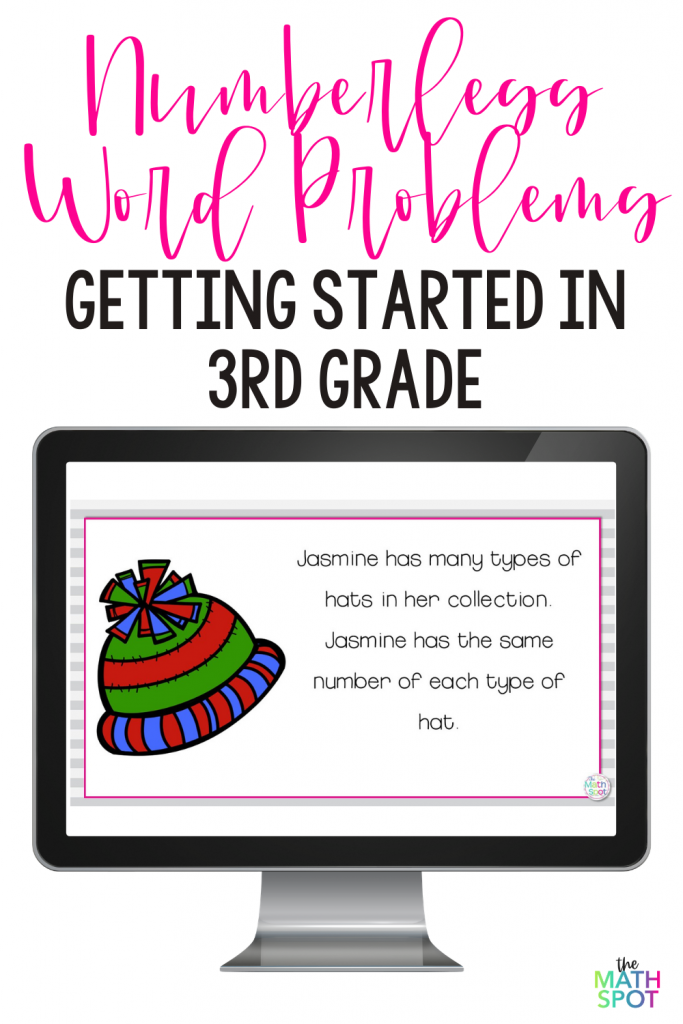
If you have landed on this page, you are likely curious about how numberless word problems might be helpful for your 3rd grade students. I’m sure you have “number pluckers” in your classroom who routinely read a word problem, pluck the numbers out and add them together… or multiply them together if that is what you have been working on most recently.
Numberless word problems are the solution to combating number pluckers!
What are Numberless Word Problems?
Simply put, numberless word problems are story contexts that don’t (yet) have numbers associated with them. This allows your students to focus on the context and action of a story problem and to make sense of what is happening in the problem.
Why Use Numberless Word Problems?
When the numbers are taken out of a word problem and your students are forced to focus on context and action, they move from “doing something to numbers” to thinking about which operation or operations could represent that action.
In an oversimplified example, “Some dogs are playing at the dog park. Some of the dogs leave and go home. How many dogs are left to play at the dog park?” given this context, your students can’t possibly jump to number plucking, instead, they would notice that in the story the major action is that some of the dogs went home. A conversation with your students will help them to connect the action of dogs leaving with the operation of subtraction. Once numbers are introduced back into the problem, your students can use the operation matching the action of the problem to solve.
How Do You Use Numberless Word Problems?
While there is no specific right or wrong way to use a numberless word problem, there are techniques that allow for more discussion and therefore deeper understanding of a word problem. I favor a technique described by Brian Bushart that unravels a problem step-by-step process that moves from a numberless scenario to a numbered word problem.
In this approach, you begin with a story context void of numbers AND void of a question.
You ask your students what they notice about the question, what (if anything) is happening in the question and you ask your students questions about the math that could occur surrounding this scenario. For example:
- What is happening in this problem?
- What could we be wondering about the mittens?
Next, you introduce back a small bit of information
- What do we know about the mittens now?
- What does it mean if we have pairs of mittens?
- Could we have 11 mittens in the box? Why or why not?
- Name some other numbers of mittens that could or could not be in the box.
Add in another piece of information. It could be the rest of the numeric information as in the case above or it could even be the question- your students may wonder what information they still need to answer that question.
- What new information did we get about our story?
- What question might we be wondering about the mittens in the box?
Finally, you will reveal the last piece of information in the story context and your students will have the opportunity to solve.
- What operation did you use to solve the problem?
- How did (operation) match what was happening in the story?
- Does your answer make sense?
- How do you know?
What Do I Need To Use Numberless Word Problems With 3rd Graders?
Specifically, when working with 3rd graders, you are highlighting the problem types for multiplication and division. Don’t get caught up in always using equal groups with a missing product type problems! Vary your word problems so that you are sometimes looking for a missing product, and sometimes looking for a missing group or group size. Be sure to incorporate area and measurement questions as well as comparison type problems.
And, if that isn’t enough, be sure to slip in addition and subtraction questions as well. The Common Core Standards include a helpful table to keep you varying your problem types as you work with your students.
Numberless Word Problems for 3rd Graders





